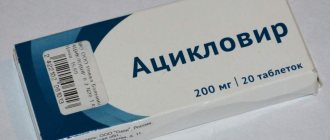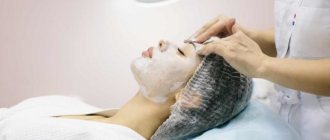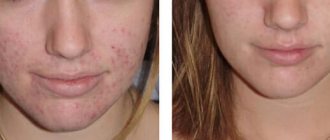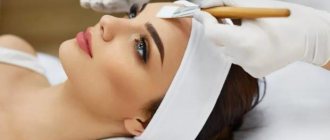From this article you will learn:
- types of fractional lasers and the principle of their operation,
- Fraxel laser: reviews, rehabilitation, before and after photos.
The Fraxel laser device can reduce the severity of wrinkles, reduce the depth of acne scars, eliminate age spots, and also treat many other skin problems. The Fraxel cosmetology laser is a fractional type laser and is available in three modifications: “Fraxel re'fine”, “Fraxel re'store” and “Fraxel re'pair”.
The peculiarity of fractional lasers is that they divide the laser beam into thousands of microscopic fractions (small rays, each of which is one tenth the diameter of a hair) and direct these fractions simultaneously to a specific area of the skin. As you will see below, this leather processing technology has global benefits.
Fractional laser can be ablative or non-ablative. Fraxel restore and Fraxel refine are non-ablative. Such lasers work deep in the skin without disturbing the integrity of the stratum corneum of the epidermis. But “Fraxel repair” is ablative, and its effect occurs with a violation of the integrity of the stratum corneum of the epidermis. The latter seems less safe, however, the effectiveness of Fraxel repair is much higher than other Fraxel devices.
Fraxel: indications for the use of fractional laser
Fraxel, like many other fractional lasers (manufactured under other brand names), is commonly used to treat the following problems:
- to reduce wrinkles and deep lines on the face and neck (Fig. 4-5),
- for general skin rejuvenation and increasing its elasticity,
- stretch marks (striae) after pregnancy (Fig. 6),
- scars and scars after operations (Fig. 7),
- acne scars (Fig. 8),
- enlarged pores,
- age spots, melasma (Fig. 9),
- spider veins,
- treatment of skin keratosis.
Fraxel: before and after photos
Why laser
Fraxel is a new word in hardware cosmetology. Its effectiveness has already been confirmed by millions of patients. The laser is perfect for any skin type, including sensitive ones.
It is possible to use microflows not only on the face, but also on the neck, chest, and arms.
Participation in sessions will not affect your daily life in any way. You do not need to undergo surgery and there is a recovery period.
The Fraxel effect is literally new skin. Smooth relief, fresh complexion and elimination of minor defects in the form of wrinkles or acne marks. Improvement is observed within 2–3 months, and the result lasts up to 1 year.
Three modifications of the Fraxel laser –
There are three main original Fraxel devices, which are used in different clinical situations, and depending on the severity of the problem.
Fraxel Re'fine –
This is a fractional non-ablative erbium laser, with a wavelength of 1410 nm and a single pulse energy of 5 to 20 mJ (Fig. 10). This laser works to a depth of 0.7 mm, and the stratum corneum of the epidermis remains intact. This is the softest type of Fraxel laser, after which healing occurs as quickly as possible, and the procedure itself is as painless as possible and lasts only 20 minutes.
Fraxel refine is used to smooth out fine wrinkles around the eyes, tighten the skin of the eyelids, remove age spots and other pigmentation on the skin, and treat melasma. Also, this type of laser generally improves the condition of the skin and can be used primarily to prevent aging.
Thus, the indications for using Fraxel refine are exactly the same as for photorejuvenation techniques using IPL devices. The latter, as a rule, are much cheaper than Fraxel laser treatment. However, Fraxel can be used on people of any skin color, and IPL devices are not recommended for people with dark skin.
Fraxel Restore –
This is a fractional non-ablative erbium laser, with a wavelength of 1550 nm and a single pulse energy of 4 to 70 mJ (Fig. 11). The depth of exposure, depending on the settings, ranges from 0.4 to 1.4 mm. This type of laser is used to treat similar problems that Fraxel refine can eliminate, but only more severe. For example, to smooth out more pronounced wrinkles.
Fraxel restore reviews also claim that it does an excellent job of removing small atrophic acne scars, hypertrophic scars, and is also used to treat stretch marks after pregnancy, pigmentation and skin keratosis.
Fraxel Re'pair –
This is a fractional laser of the ablative type, belongs to the group of CO2 (carbon dioxide) lasers with a wavelength of 10600 nm and a single pulse energy of up to 225 mJ (Fig. 12). Unlike classic ablative lasers, which work only deep into the epidermis, Fraxel Repair works in both the epidermis and dermis. The depth of exposure ranges from 0.4 to 1.6 mm, and it can be adjusted by the settings of the device, on which modes can be selected: “medium ablation” or “deep ablation”.
Medium ablation mode primarily targets the lower layers of the epidermis and upper layers of the dermis, which is suitable for smoothing shallow wrinkles (such as around the eyes), reducing pore size and improving skin texture.
Fraxel repair in the “deep ablation” mode acts primarily on the middle layers of the dermis, which is excellent for smoothing out deep wrinkles. When using this mode, there is also a pronounced skin lifting effect, which you will notice immediately after the procedure. The device is also successfully used to remove age spots and spider veins, as well as to remove hypertrophic scars and scars.
Analogues of the Fraxel Repair laser produced by other manufacturers -
- Active and Deep FX (Lumenis),
- Quadralase (Candela),
- Pearl Fractional (Cutera), etc...
Comparison of Fraxel refine and Fraxel restore – with Fraxel repair…
Fraxel repair fractional ablative CO2 laser is more aggressive than erbium non-ablative lasers Fraxel refine and Fraxel restore, which leads to greater synthesis in tissues of inflammatory mediators, proteins and factors that stimulate stem cells and fibroblast function. Accordingly, the effectiveness of the procedure with the Fraxel ablative CO2 laser will be 2 times higher, although healing will take 2-3 times longer. In addition, it is “Fraxel repair” that gives the best skin lifting effect.
Operation process of fractional CO2 laser: video
The essence of fractional laser rejuvenation
One of the newest modern developments in the field of cosmetology is the technique of fractional laser rejuvenation. Currently, it is not without reason that it can be called the most popular of all laser therapy procedures.
During the session, a laser beam passed through a special fractional grid breaks up into a large number of microbeams. This method provides a targeted (fractional) effect on the skin without completely disrupting it.
Recommended articles on the topic:
- Ultrasonic facial peeling is a pleasant and beneficial procedure for your skin
- Redermalization of the skin: all the pros and cons
- Almond peeling for the face: features of the procedure
Many tiny treatment areas are formed in the dermis layer, where the development of renewed young skin tissue occurs very quickly. Cells located around the affected areas begin intensive division, filling the damaged areas. As a result, rejuvenating processes in the deep layers of the dermis are stimulated. Micro-rays, affecting the middle and upper layers of skin tissue, help eliminate pigmentation, wrinkles and scars.
Fractional laser rejuvenation of facial skin helps it gain firmness and elasticity. In addition, thanks to the procedure, pores are significantly reduced, the oval of the face becomes more toned, the shade and texture of the skin becomes smoother, and wrinkles and scars are significantly smoothed out.
How Fraxel Fractional Laser Works –
To understand how it all works, you need to know the structure of the skin (Fig. 13). The skin consists of 3 layers: → epidermis (surface layer), → dermis (middle layer), → subcutaneous fatty tissue.
The epidermis consists of numerous layers of keratinocytes of varying degrees of differentiation. The epidermis also contains melanocytes (so-called pigment cells), which are responsible for skin color. The dermis consists of collagen and elastin fibers, fibroblasts, which provide the skin with strength, firmness and elasticity (24stoma.ru).
As our body ages, the appearance and general characteristics of the skin change. The epidermis becomes thinner, various spots on the skin become more noticeable, and the collagen content in the dermis by the age of 45 decreases by almost half. Skin moisture is noticeably reduced due to a decrease in hyaluronic acid content. All this leads to the gradual appearance of wrinkles, the formation of deep lines on the face, and the skin becomes flabby.
Principle of operation -
Using special technology, the laser beam is split into thousands of microbeams, each of which is one-tenth the size of a human hair.
That is why such lasers are called fractional. The meaning of such fractionation is that areas of destroyed tissue are subsequently surrounded by areas of undamaged viable tissue, the cells of which will ensure rapid restoration of damaged areas. When using non-ablative Fraxel lasers (Fraxel refine and Fraxel restore), numerous micro-areas of tissue coagulation (MTZ microthermal zones) are formed - in the form of columns perpendicular to the skin surface (Fig. 14). And when using the Fraxel repair ablative laser, not only injury occurs, but also a certain percentage of tissue is removed, which leads to a pronounced skin lifting effect.
In response to such damage, the body begins to synthesize more proteins, mediators and signaling molecules, which cause the activation of skin stem cells and increase the rate of their division. A large number of new cells begin to gradually synthesize the structural elements of the skin, such as collagen and elastin. Moreover, after using the Fraxel repair ablative laser, these processes are more pronounced.
When using non-ablative Fraxel lasers (Fraxel refine and Fraxel restore), coagulation areas occur predominantly in the dermis without compromising the integrity of the stratum corneum of the epidermis. And when using the Fraxel repair ablative laser, coagulation occurs with a violation of the integrity of the stratum corneum, which leads to the formation of microholes in it up to 200 microns in size, which are completely restored in about 24-45 hours (Fig. 17). Damage to the dermis is restored in 4-7 days.
Contraindications for such rejuvenation
Fractional rejuvenation, like any cosmetic procedure, is not suitable for everyone. Therefore, in order to avoid negative consequences, before the session it is necessary to carefully study all contraindications.
Fractional photothermolysis is not recommended:
- during pregnancy and during breastfeeding, since any changes that occur in the body of a pregnant or lactating woman affect the baby - you should not risk the child’s health, it is better to postpone the procedure;
- in case of inflammation (or redness) in the treated area, the cosmetologist will refuse to carry out fractional laser photothermolysis in the cheek area if they are covered with an allergic rash (the laser beam can damage the skin up to deep scars);
- for chemical peeling - if you have cleansed your face, you need to allow the layers of the epidermis to strengthen for two weeks (minimum) and prepare for exposure to the laser beam;
- in the presence of oncological diseases, since spontaneous complications may arise as a result of laser exposure;
- with diagnosed diabetes mellitus;
- in the presence of viral and bacterial infections - in order to avoid the invasion of foreign elements into the cell structure during fractional rejuvenation, it is first necessary to recover completely.
Stages of the procedure using Fraxel –
Preliminary preparation
The problem area is determined and adapted to the template to determine the target area of correction. Fraxel photos must be taken before the procedure. The patient should remove all jewelry and wash their face thoroughly with soap and water before the procedure.
For patients with skin pigmentation problems, treatment with a whitening cream (eg hydroquinone) or a pre-chemical peel may be required. In patients at high risk of developing herpes, Acyclovir can be used as a prophylaxis against herpes.
Next, an anesthetic is applied to the treated area. You must wait 45-60 minutes before the full anesthetic effect occurs. Then the anesthetic is removed and a special gel is applied to the treatment area, which ensures that the Fraxel laser handle glides easily over the surface of the skin.
Fractional laser treatment procedure
Treatment time depends on the area being treated. For example, a full face usually takes about 30 minutes, a neck about 20 minutes. The degree of pain during the procedure will depend on the energy power of the laser light pulses (from 4 to 70 mJ; set on the equipment). Sometimes a cooling device (such as a Zimmer) is used to reduce discomfort during the procedure.
Typically 4-5 Fraxel treatments are required, depending on the level of energy used and the condition of the skin being treated. These procedures are performed within a month.
Fraxel: reviews and consequences
For about 1 hour after the procedure, patients may experience a sensation similar to that of sunbathing. During healing and for several months after the procedure, it is recommended to apply a moisturizing sunscreen with a protection level of at least 50 SPF. It is necessary to protect the skin from exposure to the sun with clothing and wide-brimmed hats.
Swelling may be present and usually resolves within 2-3 days. Expect your skin to have a pink tint for 3-5 days. In addition, the epidermis is restored within up to 40 hours, which at the beginning may have a tan color (this disappears in 3-14 days). As a rule, peeling of the skin is observed, but this problem is easily solved by using a moisturizer. According to the cosmetologist's indications, after ablative therapy with the Fraxel repair laser, skin peeling can be applied using water, Vaseline and gauze 1-2 times a day.
Fraxel: photo immediately after the procedure, and in dynamics
Number of sessions
After fractional laser rejuvenation of the eyelids and other problem areas, rehabilitation of 3–7 days is required. The duration of the rehabilitation period will depend on the patient's lifestyle. For example, bad habits, poor nutrition, excessive physical activity, stress and disturbed sleep can significantly slow down skin regeneration after the procedure.
During the first three days after the session, redness and slight swelling may appear on the skin. To reduce the level of discomfort, you can take painkillers and use skin cooling products.
It is considered normal if during the first week the skin feels tight and peels in some places. Side effects include a bronze tint to the face, which disappears after 14 days.
A lasting result can be achieved by performing two to five procedures. A cosmetologist can tell you exactly how many sessions are needed, depending on each individual case and the client’s initial data.
The interval between sessions should be at least 3-4 weeks. Fractional laser rejuvenation slows down aging: wrinkles decrease or disappear completely, turgor increases, pores narrow, and complexion evens out. This method effectively removes pigmentation, post-acne, stretch marks and scars.
Fractional laser: reviews
Results after Fraxel - reviews confirm that the onset of the effect is progressive. The most visible result appears within 3-4 months after the procedure. During this period, complete healing and replacement of tissue occurs with the formation of new cells with new collagen and elastin. However, after using Fraxel repair, the lifting effect can be noticed immediately after the procedure.
Studies show that a 20-40% overall improvement in fine lines and wrinkles was achieved after a mild rejuvenation procedure. More aggressive procedures (with high light beam energy) performed by fractional laser - reviews have shown from 30 to 70% of visible improvement.
Fractional laser can be combined with surgical rejuvenation methods, as well as non-surgical procedures, such as plasma lifting. In the latter case, the desired result can be achieved faster and with fewer procedures. Laser skin resurfacing is not a cheap pleasure, so the number of procedures can also matter.
Fractional rejuvenation for the treatment of scars and stretch marks
This rejuvenation method is especially effective in treating scar tissue. Fractional laser beams have the ability to crush roughened scar tissue, after which it acquires elasticity, softness, and the tension of the surrounding healthy tissue decreases.
Fractional photothermolysis helps reduce the area of scars, making them elastic, unnoticeable, and as close as possible in appearance to healthy skin.
Fractional rejuvenation is indicated for the treatment of stretch marks. Sadly, stretch marks cannot be completely eliminated, you can only make them more invisible.
The effect of fractional treatment is:
- reducing the area of stretch marks;
- reducing tissue fiber breaks;
- aligning the shade of stretch marks with the tone of healthy skin;
- increasing the elasticity and firmness of the skin tissue around and relieving tension.
Side effects and complications –
Laser Fraxel reviews confirm that the procedure is usually quite well tolerated by patients. In the near future after the procedure, you can shave and apply makeup. In most cases, patients can return to work immediately after treatment or the next day, which will depend on the power of the laser light pulses chosen by the cosmetologist.
Side effects and consequences after Fraxel –
- excessive peeling of the skin (sometimes the appearance of crusts),
- contact dermatitis,
- exacerbation of herpes, acne,
- infectious skin lesion,
- temporary post-inflammatory skin pigmentation,
- swelling for 1 week after treatment (in such cases, the use of ice and antihistamines helps).
Important: despite the fact that fractional laser is most often used to treat various pigmentation disorders, the treatment itself in some cases can lead to post-inflammatory pigmentation.
Frequently asked questions about fractional laser rejuvenation
Minimum age allowed for laser facial rejuvenation
There are practically no restrictions. The procedures can be performed as early as 17 years of age to get rid of acne scars.
For women over 40 who want to maintain youth and attractiveness, the technique is especially useful, since laser beams provoke the production of their own collagen by skin cells.
The recovery period after fractional laser rejuvenation is usually 7–14 days. The duration of rehabilitation depends on the complexity of the problem and the type of laser treatment.
When can I start working?
This depends on what type of laser treatment was used, on the area of problem areas, and on the experience and skills of the cosmetologist. The recovery period, based on the method and complexity of the defects, ranges from two days to three weeks. It happens that the patient can start working just a day after the session.
How long does it take to see results?
It takes about six months for the skin to be completely renewed and the effect to become noticeable. The result lasts for about five years.
Fractional laser facial skin rejuvenation is a highly effective cosmetic procedure. It has many advantages compared to similar anti-aging techniques. But you need to know that this procedure is not suitable for everyone and has contraindications. Therefore, you must first consult with a specialist. And to reduce the risk of complications, you should choose only reliable and trusted clinics.
Why clients choose Veronika Herba Beauty and Health Center:
- This is a beauty center where you can take care of yourself at a reasonable cost, while your face and/or body will be treated not by an ordinary cosmetologist, but by one of the best cosmetologists in Moscow. This is a completely different, higher level of service!
- You can receive qualified help at any time convenient for you. The beauty center is open from 9:00 to 21:00, seven days a week. The main thing is to agree with your doctor in advance on the date and time of your appointment.
Sign up for a consultation with a specialist by phone +7 (495) 085-15-13
, and you will see for yourself!
Fractional laser: price
Fraxel prices in Moscow for procedures differ depending on the treatment area and the type of fractional laser itself. Below we have indicated the cost of the procedure using the Fraxel restore device. Depending on the severity of skin changes, 3-5 procedures may be needed to achieve the desired result.
Fractional laser: procedure price
- the entire face, including eyelids, will average 25,000 - 30,000 rubles,
- only crow's feet near the eyes - about 4500-6000 rubles,
- nasolabial triangle - about 6000 - 8000 rubles.
Indications
Fraxel treatments are usually prescribed for people over 30 years of age. This is an ideal remedy for those with damaged, sunburned or simply aging skin.
Using the device, you can eliminate:
- visibility of crow's feet near the eyes;
- severe signs of sunburn;
- senile pigmentation;
- enlarged pores;
- consequences of acne;
- actinic keratosis.
In addition, you will definitely notice an improvement in your complexion. If there were postoperative scars or stretch marks, they will become smaller. Laser also works well against the effects of acne and other skin diseases. The number of sessions is determined after a 3D skin diagnosis and conversation with the patient.
Laser resurfacing or chemical peeling: which is better to choose?
Laser resurfacing or chemical peeling: which is better to choose for maximum results.
For many years in a row, chemical peels have been famous for their excellent action and results. However, with the development of laser technologies, laser technologies are confidently winning the podium. More and more beautiful women are abandoning aggressive effects on the skin in favor of a more gentle method.
What is better to choose, grinding or peeling, is up to you to decide. If you find it difficult to choose, specialists with extensive experience at Coolaser Clinic will be happy to answer all your questions.
Laser resurfacing and chemical peeling. What are the similarities?
Both methods have the same focus on the result - removing the stratum corneum of the epidermis (dead cells) and stimulating basic processes.
Why is removing dead cells from the surface of the skin so important? It's simple. In order for cells to actively renew themselves, they must not have any obstacles. The better the epidermis is cleansed from the stratum corneum, the less inflammation and the better our skin is renewed.
Stages of healing
Recovery after laser resurfacing can be divided into main stages. At the first stage, the primary process of regeneration of damaged skin begins. There is slight swelling, redness, crusts and peeling. During this period, it is especially important to follow the recommendations described above.
At the second stage , the skin returns to normal; the main rule is not to forget about protection from UV radiation and moisturizing. You can gradually return to wearing light makeup and normal skin care without using aggressive products.
With the onset of the third stage, there is no need for special care shown in the first 2 stages. To speed up the rehabilitation process, you can resort to restorative injection procedures, such as mesotherapy or biorevitalization.
Rehabilitation rules
If you follow the doctor’s recommendations, rehabilitation will not cause major problems, and the effect after Fraxel will be more pronounced.
Patients must adhere to the following rules:
- Avoid exposure to direct sunlight and artificial ultraviolet radiation. At this time, it is better to be outdoors less often, and if you do have to go outside, you need to wear a wide-brimmed hat and sunglasses. Solarium is contraindicated.
- To reduce burning and peeling, you can use mild moisturizing creams and masks. Any peeling of peeling areas is contraindicated. Panthenol has a good restorative effect.
The response to Fraxel and the duration of rehabilitation are individual for each person. The maximum positive effect after the procedure depends not only on the skill and experience of the doctor, but also on how carefully the patient follows his recommendations. In our cosmetology clinic you can use the skin rejuvenation service using laser fractional photothermolysis and undergo a full course of rehabilitation under the supervision of specialists.











